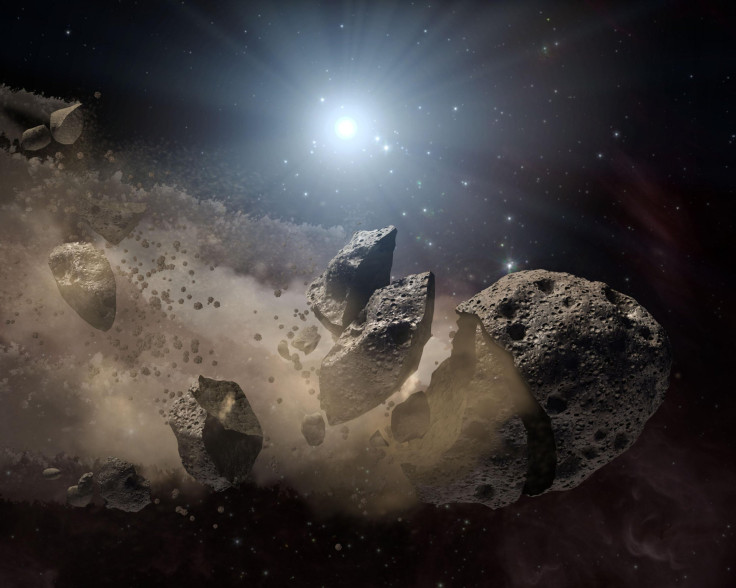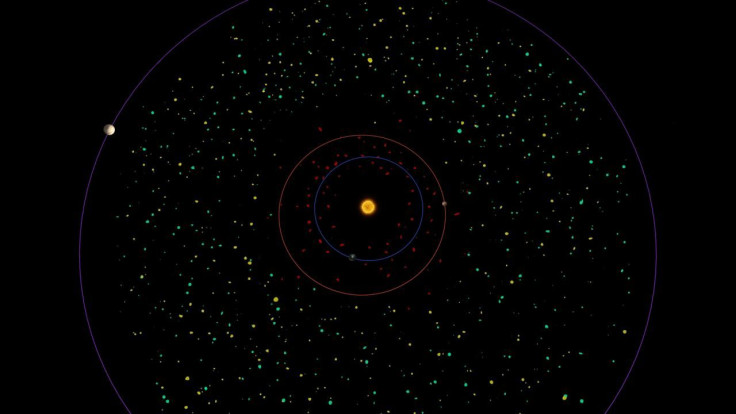How Did The Planets Form? Asteroid Family Reveals Early Solar System

How the planets formed is one of the great mysteries of astronomy, but scientists are finding some clues in the asteroid belt that are a window into the early days of our solar system. A team of researchers has identified a new family of asteroids that split off from the same parent rock 4 billion years ago, and their find offers a clearer picture of the space environment at the time the planets were coming together.
Experts debate whether the planets originated from rocky predecessors that grew slowly as tiny pieces of material clumped together or whether these “planetesimals” started as large chunks and grew from there. “Understanding the formation of the planetesimals, the building blocks of planets, is a crucial problem in planetary science,” according to a study in the journal Science. But the new asteroid discovery supports the theory that these rocks were “born big.”
Read: NASA Would “Armageddon” an Asteroid That Threatened Earth
This family is 4 billion years old, living in a universe that is roughly 4.6 billion years old.
“I can’t believe that we could see a family this old,” study scientist Kevin Walsh, from the Southwest Research Institute in Boulder, Colo., told International Business Times. “We’re looking back at the history of the solar system.”
The asteroid belt has seen many collisions between rocks over the years, with those collisions creating lots of smaller asteroid fragments. For this study, scientists identified a new group of asteroids that can be traced back to the same planetesimal from the early solar system, and it is one of the oldest families ever found.
Walsh said the team determined which of the numerous asteroids orbiting in the ring between Mars and Jupiter belonged to this one group by analyzing both their properties and their orbit. Related asteroids will have similar compositions and reflect light similarly, for starters. But relatives also reveal their connection through their formation, which is shaped like the letter “V.”
An asteroid collision creates a cluster of fragments that drifts apart over time, mostly as a function of how radiation from the sun pushes them around. Smaller pieces get pushed faster and farther until the fragments settle into a V-shape, with the largest piece anchoring the junction of the “V” as the “little ones up top … are blasting off,” Walsh said.
Corresponding study author Marco Delbo, from the Observatory of Cote d’Azur in Nice, France, called it “the signature of a family.”
Part of what makes the ancient asteroid set so useful as a classification is knowing which rocks are not members of this or dozens of other previously identified families. Because the leftover, family-less asteroids they identified were larger than 20 miles across, the scientists got a better idea what planetesimals looked like back in the day.
Even though this is a view of the rocks that stayed within the asteroid belt rather than growing into planets, it is information that can help us better understand these pre-planetary bodies and the environment of the young solar system. And researchers say it points to big planetesimals that accumulated even more material and grew into planets.
Read: Is a 10th Planet Hiding Among the Asteroids in Our Solar System?
It’s unclear why these planetesimals in the asteroid belt never grew into full-blown planets while others did.
“It’s a question that has been going on forever and is still not totally resolved,” Delbo told IBT. “To explain how you go from dust to planets has been incomplete and unsolved for many, many years.”
According to Delbo, the next step for the research team is figuring out how big this ancient group of asteroids was when it was still one piece, pre-collision. That would offer further information about the sizes of objects in the young asteroid belt and how many planetesimals once existed there.
“What is special about the solar system, what is special about the Earth,” he said. “We think the discovery of this family … it means something.”

© Copyright IBTimes 2024. All rights reserved.





















